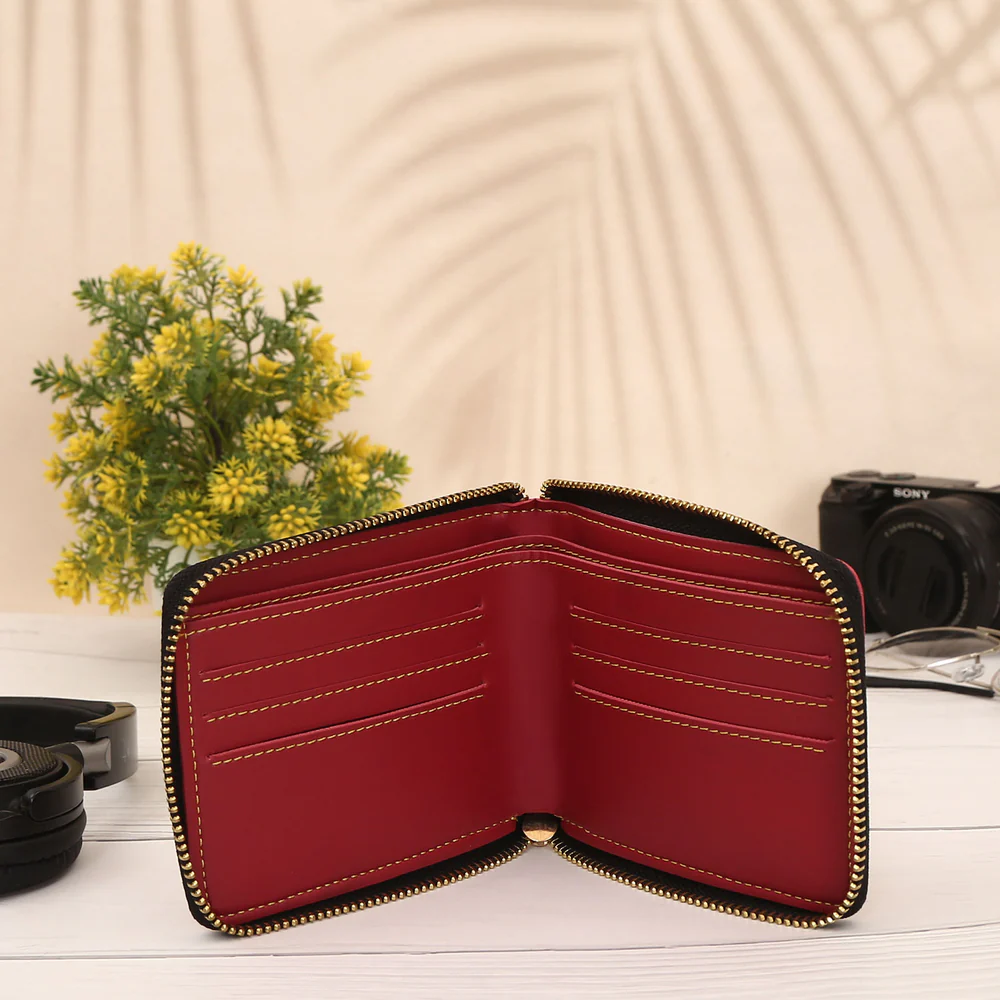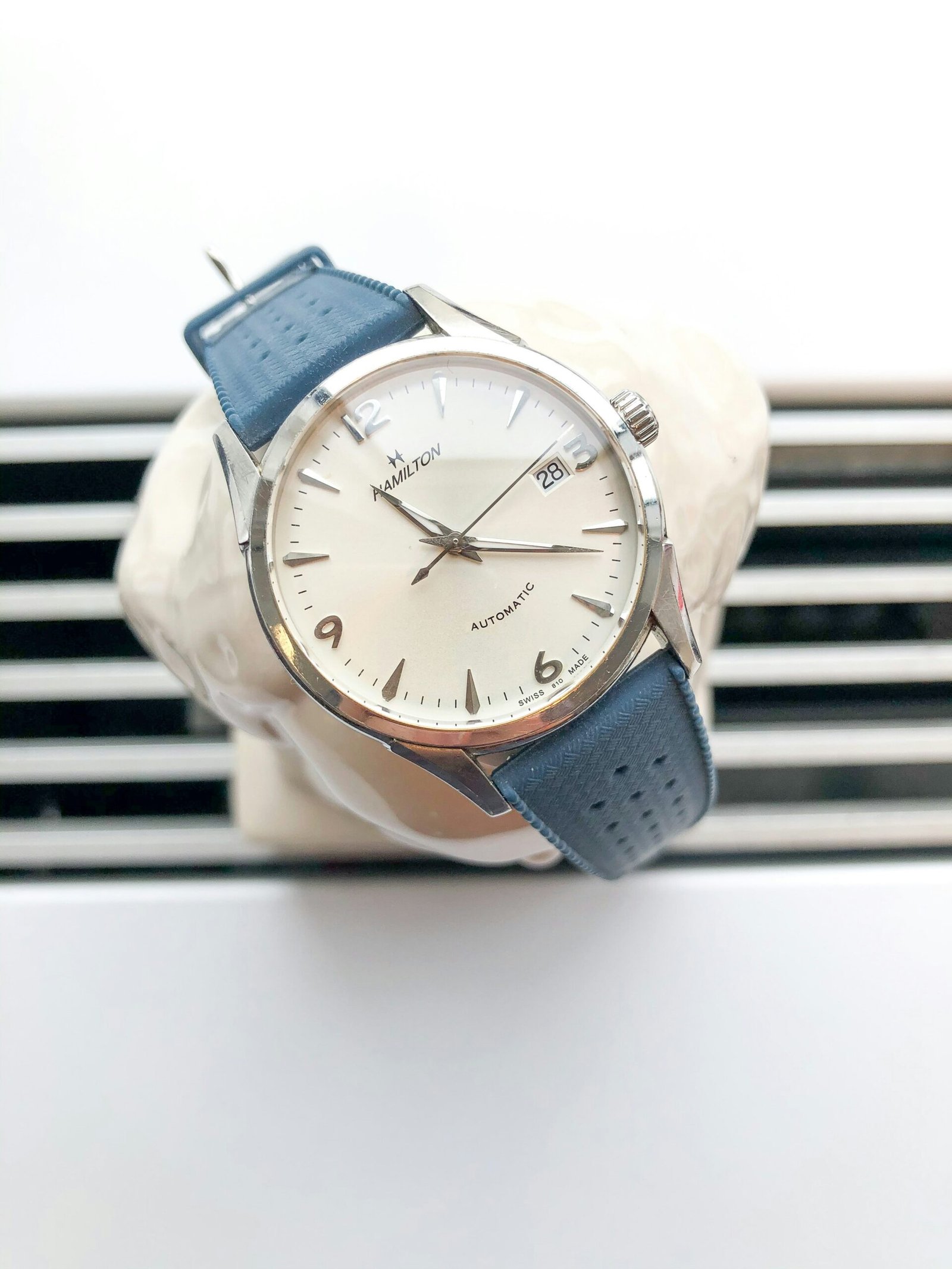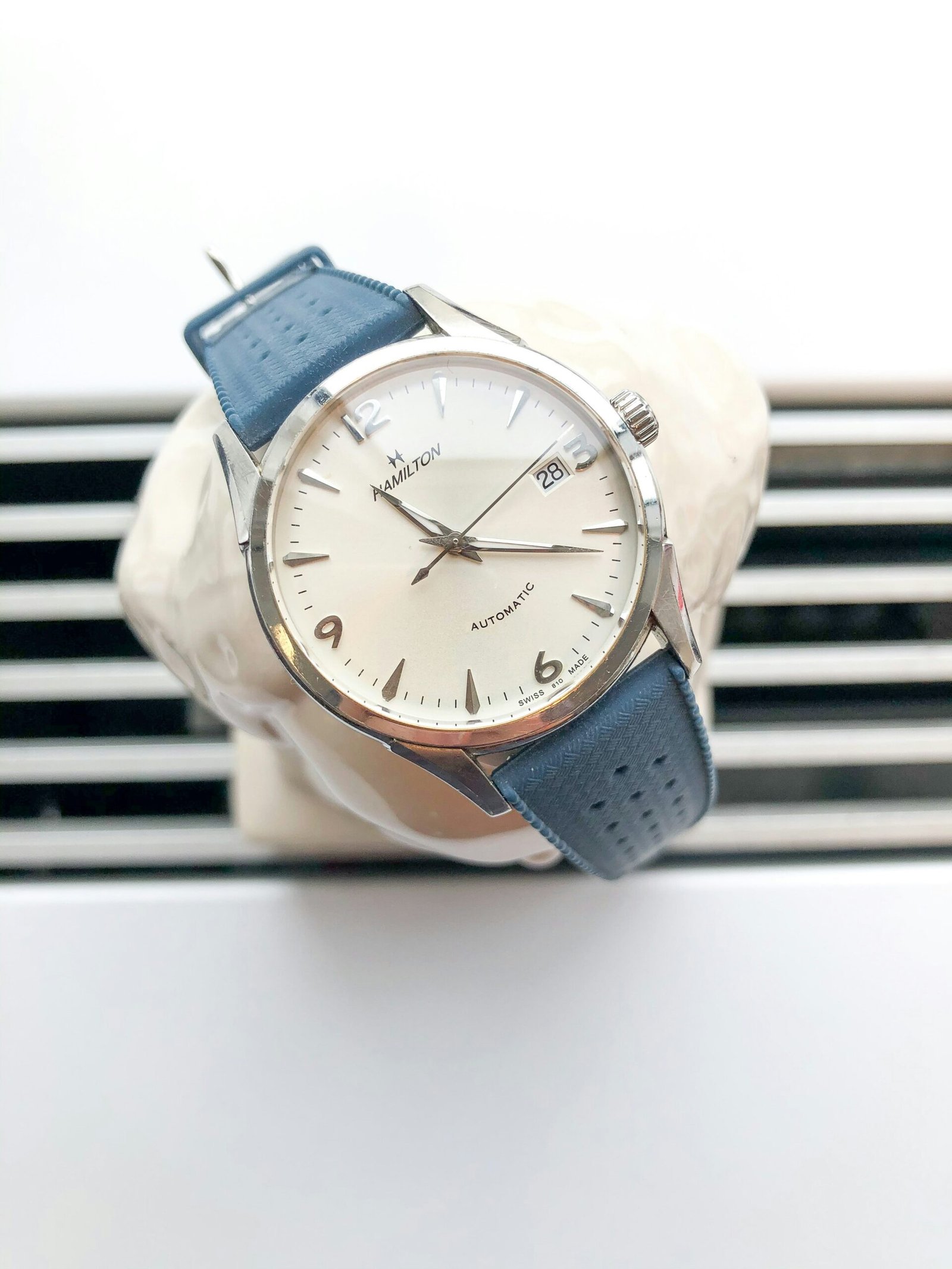
DEMO
Lorem ipsum dolor sit amet, consectetur adipiscing elit. Ut elit tellus, luctus nec ullamcorper mattis, pulvinar dapibus leo.

Lorem ipsum dolor sit amet, consectetur adipiscing elit. Ut elit tellus, luctus nec ullamcorper mattis, pulvinar dapibus leo.

Watches have long been more than just instruments for telling time. They are symbols of craftsmanship, style, and heritage. From the intricate mechanics of traditional watches to the cutting-edge technology of smartwatches, the world of horology offers something for everyone. In this blog, we’ll explore the fascinating journey of watches, from their historical roots to their modern-day iterations, and understand why they continue to captivate us The Historical Tapestry of Watches The history of watches dates back to the 16th century when the first portable timepieces, known as “clock-watches,” emerged. These early devices were worn around the neck or attached to clothing. They were primarily ornate and status symbols rather than accurate timekeepers. The 17th century saw the advent of the pocket watch, a significant evolution in horology. Pioneered by inventors like Christiaan Huygens, who introduced the balance spring, pocket watches became more accurate and widely used. The intricate designs and engravings on these watches made them treasured heirlooms. The 20th century brought the wristwatch into prominence. Initially popularized by soldiers during World War I for their practicality, wristwatches quickly became fashionable accessories for both men and women. The introduction of quartz technology in the 1960s revolutionized the industry by making watches more affordable and precise. The Art and Science of Mechanical Watches Mechanical watches are marvels of engineering. Unlike quartz watches, which use a battery-powered quartz crystal oscillator to keep time, mechanical watches rely on a complex system of gears, springs, and levers. The heart of a mechanical watch is the mainspring, which stores energy when wound. This energy is released through the escapement, which regulates the watch’s ticking motion. The balance wheel oscillates back and forth, ensuring the hands move at a consistent rate. This intricate dance of components is a testament to human ingenuity and craftsmanship. Luxury brands like Patek Philippe, Rolex, and Audemars Piguet are revered for their mechanical watches. These timepieces often feature complications—additional functions such as chronographs, moon phases, and perpetual calendars. Each complication adds layers of complexity and showcases the watchmaker’s skill The Digital Revolution: Quartz and Smartwatches The quartz revolution of the late 20th century democratized watch ownership. Quartz watches, powered by a small battery and a quartz crystal, offered unmatched accuracy and required minimal maintenance. Brands like Seiko and Casio became household names, providing reliable and affordable watches to the masses. In recent years, smartwatches have redefined what a watch can do. Devices like the Apple Watch and Samsung Galaxy Watch are essentially wearable computers, capable of tracking fitness, monitoring health, receiving notifications, and even making calls. They seamlessly integrate with our digital lives, offering convenience and connectivity Watches as Fashion Statements Beyond their functional aspects, watches have always been significant fashion accessories. A well-chosen watch can elevate an outfit, convey personal style, and reflect the wearer’s personality. From the elegance of a slim dress watch to the rugged charm of a diver’s watch, there’s a timepiece for every occasion and taste. High-end fashion brands like Cartier, Gucci, and Chanel offer watches that are as much about aesthetics as they are about timekeeping. These watches often feature luxurious materials like gold, diamonds, and exotic leathers, making them coveted status symbols Collecting and Investing in Watches Watch collecting is a passion for many enthusiasts, with some timepieces considered valuable investments. Vintage watches, in particular, can appreciate significantly in value over time. Factors influencing a watch’s value include its rarity, condition, brand, and provenance. Auctions by houses like Sotheby’s and Christie’s often feature rare and historically significant watches, fetching prices in the millions. Collectors seek out iconic models like the Rolex Submariner, the Omega Speedmaster, and the Patek Philippe Nautilus, which have become legends in their own right. The Future of Watches The future of watches lies at the intersection of tradition and innovation. While mechanical watches will continue to be cherished for their artistry and heritage, smartwatches will evolve with advancing technology, offering even more sophisticated features. Sustainable watchmaking is also gaining traction, with brands focusing on eco-friendly materials and ethical production practices. This shift reflects a growing awareness of environmental issues and a desire for responsible luxury. Conclusion Watches are more than mere timekeepers; they are expressions of art, history, and innovation. Whether you appreciate the intricate mechanics of a Swiss timepiece, the practicality of a quartz watch, or the multifunctionality of a smartwatch, there’s no denying the enduring allure of watches. As they continue to evolve, watches will remain cherished companions, blending timeless craftsmanship with modern technology.

Watches: More Than Just a Timepiece Watches have been a staple accessory for centuries, serving as both a functional timepiece and a stylish statement. While smartphones may have taken over as the primary means of checking the time, watches continue to hold their own as a fashion accessory. In this blog post, we will explore the significance of watches as a style statement and what they bring to your overall look. Timeless Elegance Wearing a watch instantly adds a touch of timeless elegance to any outfit. Whether you opt for a classic analog watch with a leather strap or a modern digital watch with a sleek metal band, the right timepiece can elevate your style game. A watch not only tells the time but also serves as a reflection of your personal taste and style. When choosing a watch, consider the design, materials, and colors that complement your wardrobe. A well-chosen watch can tie together your entire look and make a lasting impression. It’s like wearing a piece of art on your wrist. Attention to Detail Wearing a watch demonstrates your attention to detail and your commitment to punctuality. In a world where time is of the essence, a watch serves as a constant reminder to stay on track and make the most of each passing minute. It shows that you value your time and the time of others. Moreover, a watch can be a conversation starter. People notice the watch you wear, and it can spark interesting discussions about style, craftsmanship, and even the history behind certain watch brands. It’s a small accessory that can make a big impact on how you are perceived by others. Functional Fashion While watches are undoubtedly a fashion statement, they are also highly functional. Unlike smartphones, which require constant charging and can easily get lost in the depths of your bag or pocket, a watch is always there on your wrist, ready to provide you with the time at a glance. Additionally, many watches come with additional features such as date displays, chronographs, and even fitness tracking capabilities. These features make watches not just a style statement but also a practical tool that can enhance your daily life. The Perfect Accessory Whether you are dressing up for a formal event or going for a casual outing, a watch is the perfect accessory to complete your look. It adds a touch of sophistication to a suit or dress and adds a dash of style to a casual jeans and t-shirt ensemble. Furthermore, watches are versatile accessories that can be worn by both men and women. There is a wide variety of watch styles available, ranging from delicate and dainty designs for women to bold and masculine designs for men. With so many options to choose from, you can find a watch that perfectly matches your personality and style. Conclusion Watches are more than just a timepiece; they are a style statement that brings elegance, attention to detail, and functionality to your overall look. Whether you wear a watch for its timeless appeal, its ability to start conversations, or its practicality, it is an accessory that adds that extra something to your outfit. So, the next time you’re getting dressed, don’t forget to strap on a watch and let it speak volumes about your personal style.

The Fascinating Story and History of Watches Watches have become an essential part of our lives, helping us keep track of time and adding a touch of style to our outfits. But have you ever wondered about the story and history behind these incredible timekeeping devices? Let’s dive into the fascinating world of watches and explore their journey through time. The Birth of Timekeeping Before the invention of watches, humans relied on various methods to measure time. From sundials to water clocks, our ancestors were constantly searching for more accurate and portable timekeeping devices. The first wearable timepieces can be traced back to the 16th century when pocket watches made their debut. These early watches were bulky and often worn around the neck or carried in pockets. They were considered a luxury item and were primarily owned by the elite. The Evolution of Watches As technology advanced, so did the design and functionality of watches. In the 18th century, watchmakers started creating smaller and more portable timepieces. This led to the development of wristwatches, which were initially worn by women as decorative accessories. However, it was during the First World War that wristwatches gained popularity among men. Soldiers found them more practical and convenient to use on the battlefield. This shift in preference marked a turning point in the history of watches, and wristwatches became the norm for both men and women. The Swiss Watchmaking Legacy When it comes to watches, one cannot ignore the significant contribution of Swiss watchmakers. Switzerland has long been associated with precision and craftsmanship, and its watchmaking industry has a rich history dating back centuries. Swiss watches are renowned for their exceptional quality, attention to detail, and innovative designs. The Swiss watchmaking tradition has been passed down through generations, with each watchmaker adding their unique touch to the timepieces they create. Some of the most prestigious watch brands, such as Rolex, Omega, and Patek Philippe, hail from Switzerland. These brands have become synonymous with luxury and are highly sought after by watch enthusiasts and collectors worldwide. The Modern Era of Watches In recent years, watches have evolved beyond their traditional timekeeping function. With the advent of smartwatches, we now have wearable devices that can track our fitness, receive notifications, and even make phone calls. Smartwatches have revolutionized the way we interact with technology, seamlessly integrating into our daily lives. They have become more than just accessories; they are now indispensable tools that help us stay connected and organized. The Timeless Appeal of Watches Despite the advancements in technology, traditional watches continue to hold a special place in our hearts. They are not just functional devices but also cherished heirlooms and fashion statements. Watches have a timeless appeal that transcends trends and fads. They are a symbol of elegance, sophistication, and attention to detail. Whether you prefer a classic mechanical watch or a modern smartwatch, there is a timepiece out there that suits your style and personality. In Conclusion The story and history of watches are a testament to human ingenuity and our constant quest for improvement. From humble beginnings to cutting-edge technology, watches have come a long way. So, the next time you glance at your wrist to check the time, take a moment to appreciate the remarkable journey that brought that watch to your wrist. It’s not just a device; it’s a piece of history and a testament to the timeless nature of human innovation.
Not a member? Create an account
Already got an account? Sign in here